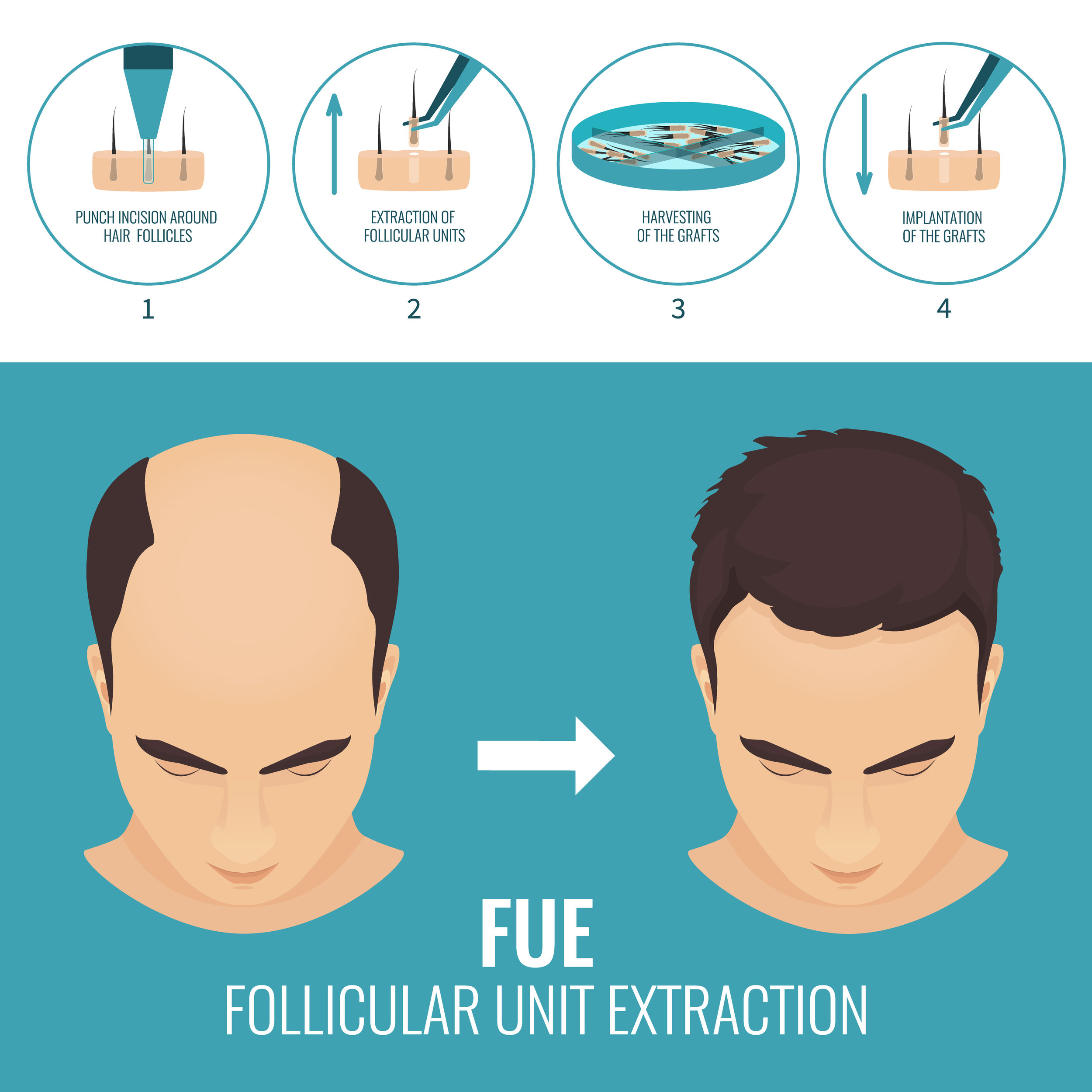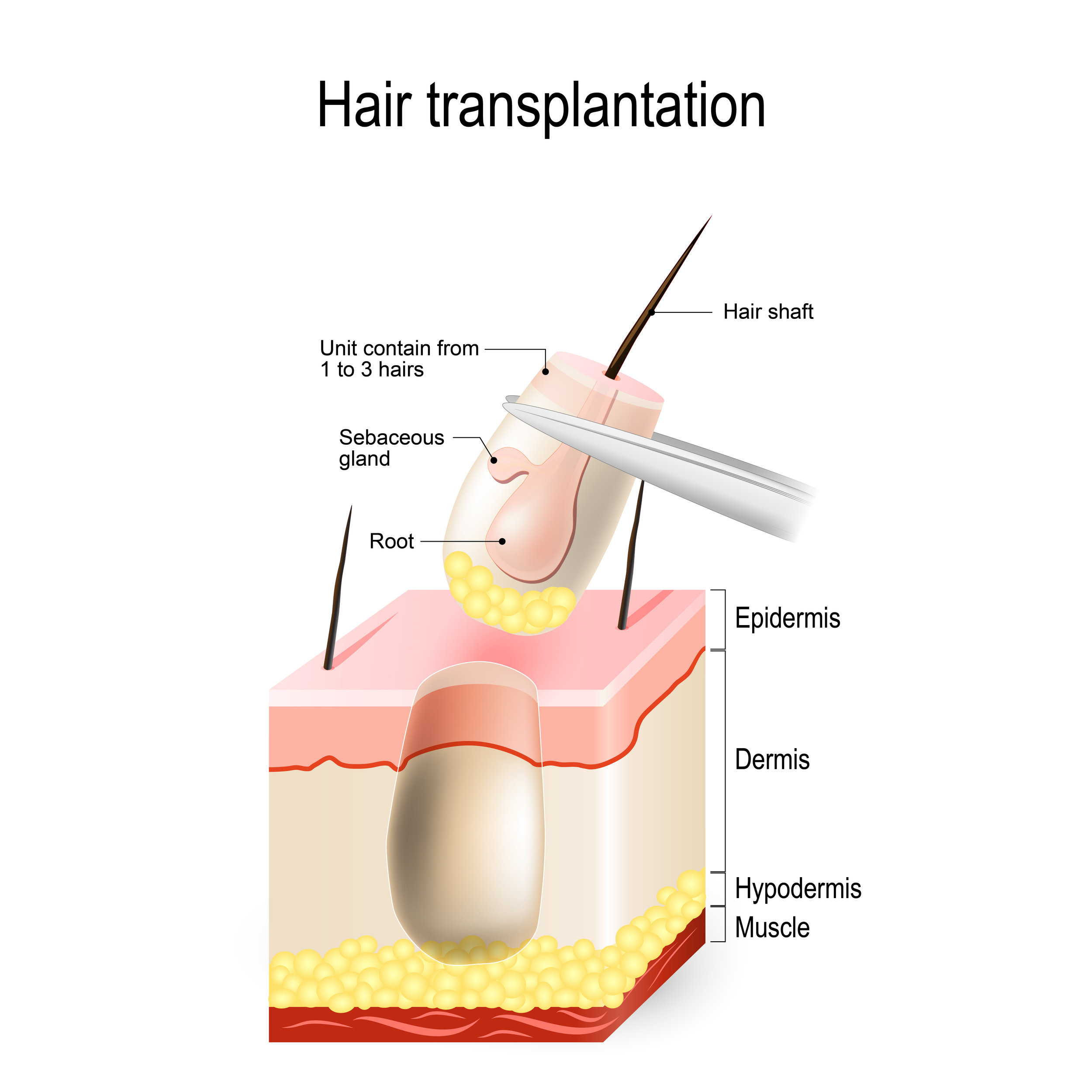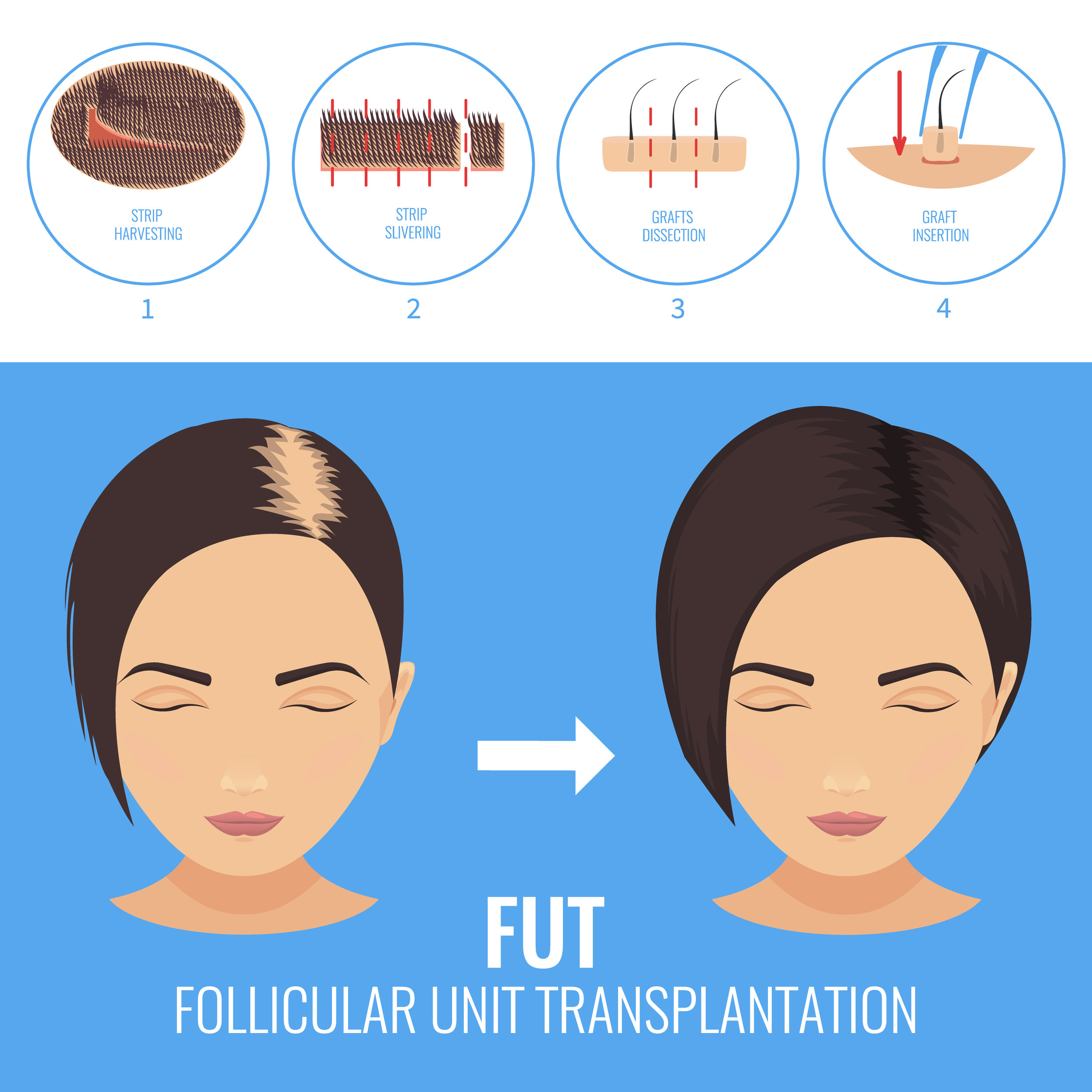Hair Transplantation
Modern hair transplantation techniques was first described in Japan in the 1930’s. The procedure, in its more crude form, was popularized by Dr. Orentreich in the 1950s (1). Over the last century the procedure has been refined, and now individual follicular units are transferred with less invasive incisions made on the balding scalp.
Is a surgical technique that takes hair from one part of the scalp with ample and stable hair (typically back of the head) and moves it to an area of thinning or balding
Can be used for management of pattern alopecia, traction alopecia, and in special cases scarring alopecia
If indicated, when treating primary cicatricial alopecia the hair loss condition should be treated and/ or stable for at least one year.
Can be performed in men and women of all racial and ethnic backgrounds.
Follicular unit transplant- FUT
Also known as the strip harvesting technique
1st described in the mid-1990’s (2, 3).
Involves excision of a strip of skin from the stable portion of the scalp. Individual 1-4 follicular units are then microscopically dissected from this strip and are transferred to tiny slits on the balding scalp.
A linear scar is left, although typically very thin (4).
Follicular unit extraction - FUE
1st described in 2002 (5)
Involves removal and dissection of individual 1-4 follicular units (FU) directly from the stable potion, non-balding area (typically posterior of the scalp. The FUs are transferred to tiny slits on the balding scalp.
Small circular scars can be expected from this procedure.
Automated FUE devices may make the process faster and easier for some hair transplant surgeons (ISHRS | ABHRS)
More than one procedure may be necessary to obtain the desired result.
FUE and FUT may also be combined depending on the individual’s needs and the surgeon’s preference.
For many people, it is essential to make sure medical therapy is continued in order to obtain maximal results.




